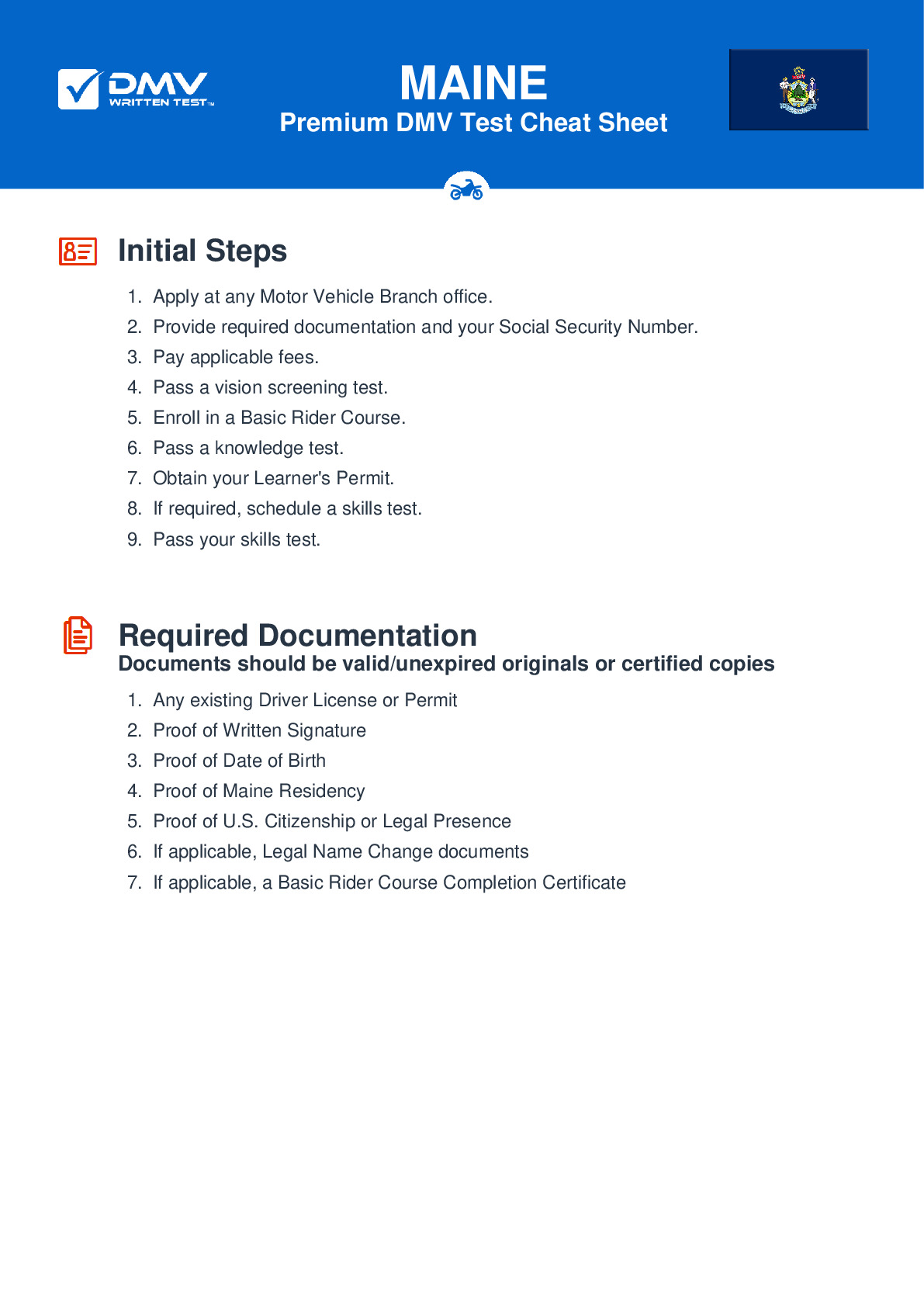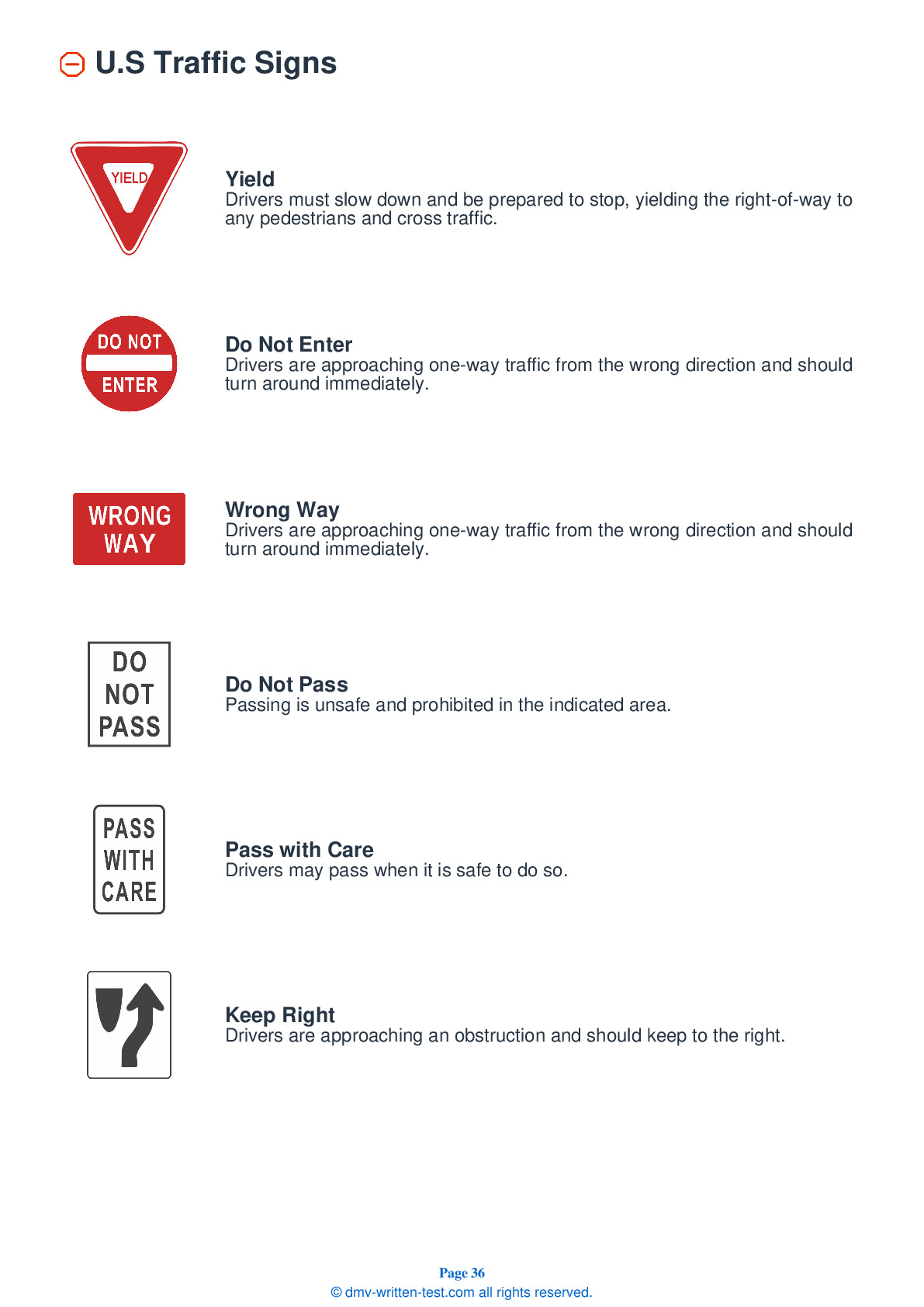2025 Maine Motorcycle Permit Test 6
The following questions are from real DMV written motorcycle permit tests. These are some of the actual permit questions you will face in Maine when getting your motorcycle learners permit. Each motorcycle theory practice test question has three answer choices. Select one answer for each question and select "grade this section." You can find this button at the bottom of the drivers license quiz. For a complete list of questions and answers for Maine please visit https://cheat-sheets.dmv-written-test.com/en/maine/motorcycle.
Number of Tests
Number of Question
Passing Score
15. In a slow, tight turn, the rider should:
Explanation
When taking normal turns, lean at the same angle as your motorcycle. However, in slow, tight turns, you should counterbalance the leaning motorcycle by keeping your body upright.
16. A rectangular sign may be a:
Explanation
Signs informing road users of road regulations, such as speed limits, are normally rectangular and colored white with black lettering or symbols. Riders must follow the rules posted on these regulatory signs.
17. Where is the engine cut-off switch usually located?
Explanation
The engine cut-off switch is generally located next to the right handgrip. It is important to know where all of your motorcycle's controls are located before starting out.
18. When it comes to motorcycle safety, you should:
Explanation
A small mechanical fault can have more serious consequences on a motorcycle than on a car. Conduct a thorough pre-ride inspection of your motorcycle before every ride.
19. To be seen in the rearview mirror of the driver ahead of you, you should:
Explanation
If you are following a car, the driver is most likely to notice you if you position yourself behind them in the center of your lane. This lane position places you in the driver's rearview mirror. Most drivers check their rearview mirrors much more frequently than they check their side mirrors.
20. When riding near stopped or slow-moving cars, a motorcyclist should:
Explanation
Riding between slowed or parked cars can leave you vulnerable to unexpected hazards, such as opening car doors or cars suddenly pulling into traffic. If a hazard arises, you will not have room to safely maneuver. Never travel on the shoulder of a road because other drivers will never expect you to be there.
21. Compared to riding during the day, a motorcycle operator who is riding at night should do all of the following, except:
Explanation




